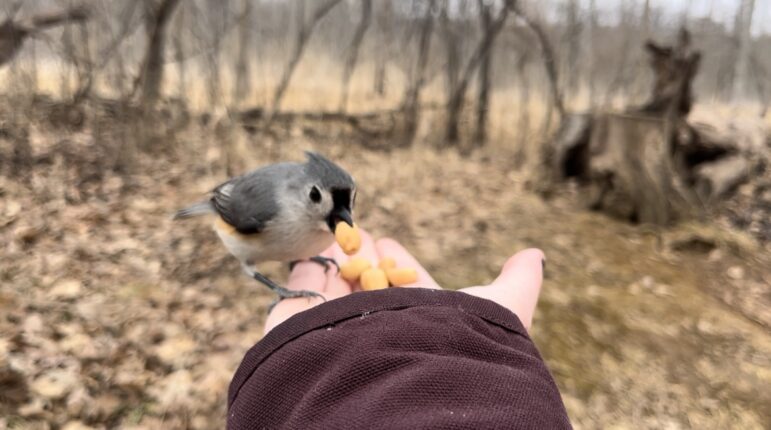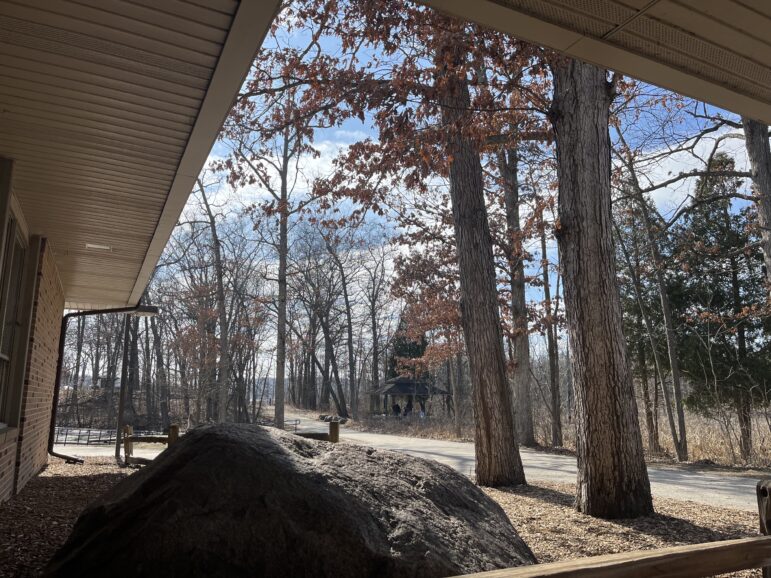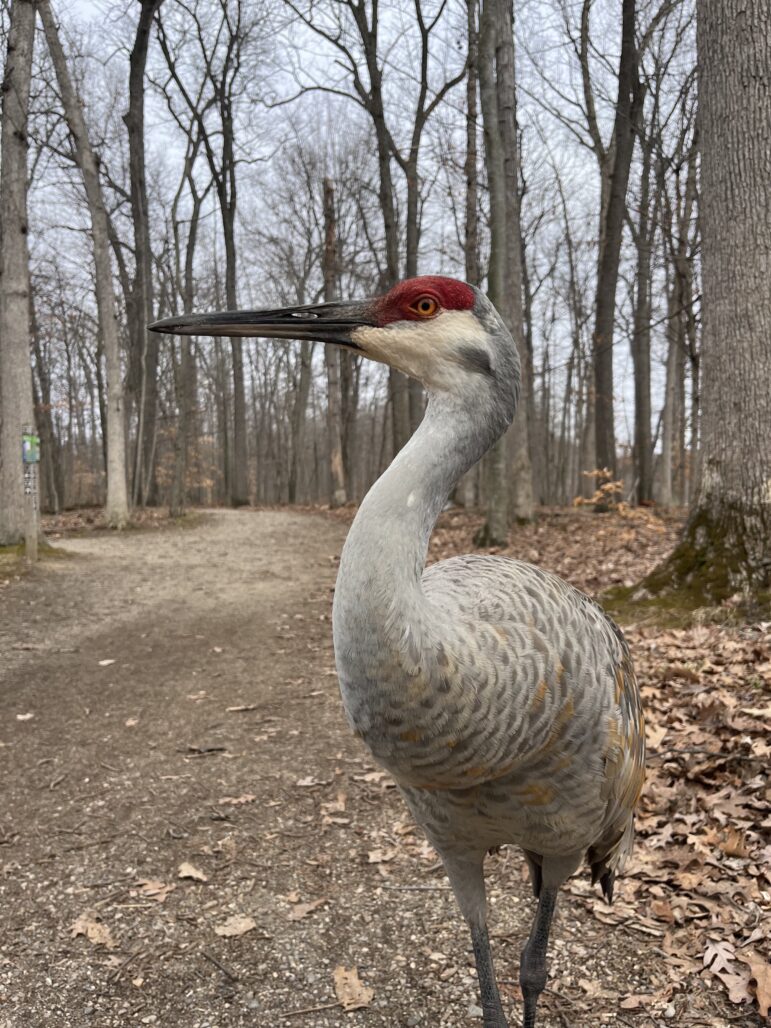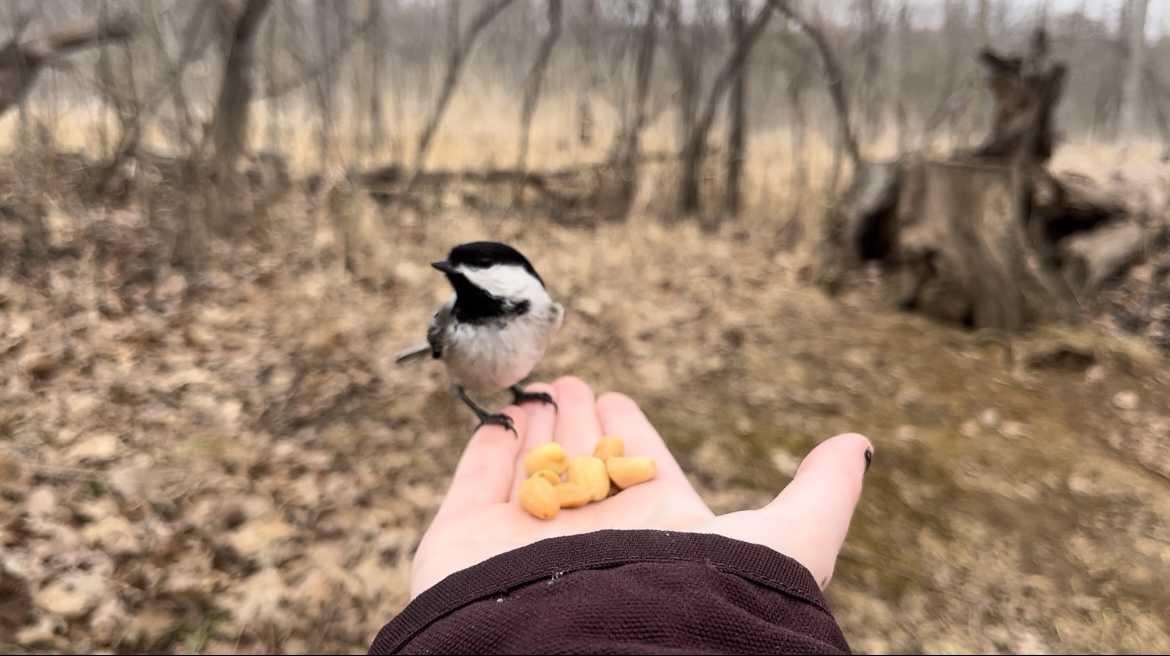
MILFORD, Mich.—Kensington Metropark in southeast Michigan is home to friendly songbirds attracting wildlife photographers, families and nature lovers.
Songbirds at Kensington Metropark have grown accustomed to people and will fly down from the trees to eat out of guests’ hands. Black-capped chickadees, white-breasted nuthatches, tufted titmice and downy woodpeckers are common hand-feeders, according to Danielle Mauter, chief of marketing and communications for the Metroparks.
Sandhill cranes, turkeys and osprey are other species you can commonly find throughout the 5,000-acre park, which has a mix of wooded areas, aquatic habitats and open grassland. Kensington is a popular destination, especially during the springtime, Mauter said.

Kensington is unique to the area because hand-feeding songbirds is discouraged at the other parks in the Huron-Clinton Metroparks system. While the park staff aren’t exactly sure how and when the birds became accustomed to hand-feeding, according to Mauter, the directors decided to use Kensington’s uniquely friendly bird population as an educational opportunity.
Kensington is the reason wildlife photographer Jocelyn Anderson began birding. Over a decade ago, she would frequently run on the park’s paved trails. On days she didn’t run, she instead walked along their nature trails. One day, she saw a small bird darting through the bushes which piqued her interest.
“I saw this adorable, tiny, very hyper little bird and I was like ‘What is that? I’ve never seen a creature like this before?’” Anderson said.
It ended up being a ruby-crowned kinglet. “Then I thought, well what else am I missing at Kensington?” she said.
Anderson began walking along the nature trails more frequently, taking notice and learning the names of the birds she saw. That same year, she received a camera and began taking photos of the wildlife on the trails, which has been a hobby of hers for eight years.
Hand-feeding the songbirds has allowed her to notice each bird’s distinct personality.“One of my favorite moments is watching a bird pull a prank on another bird,” she said.
While hand-feeding the birds one day, a tufted titmouse spotted a white-breasted nuthatch on a lower branch. The titmouse flew down behind the nuthatch quietly and chirped loudly, startling the nuthatch and causing it to fall off the branch.
Anderson said she can tell the difference between two specific female cardinals that eat from her hand in the park. One of the cardinals is timid, with more red feathers on her head, and the other, deemed “queen of the boardwalk” by Anderson, is more bold—willing to stand her ground against red-winged blackbirds for food.
Another photographer, Craig Bamm, has been visiting Kensington for the past two years. Photographing wildlife and birds requires patience and no sudden movements, Bamm said.
According to Bamm, the birds at Kensington are less skittish than your typical songbird would be. A red-headed woodpecker, an uncommon bird flew down on the log he was photographing as he spoke.
“If you just sit still for maybe 20 minutes, then in the bird’s mind you become part of the environment,” Bamm said. “They’ll start coming back around like everything is normal again.”
The rarest bird he’s photographed at the park is a least bittern, a shy, wading bird, last summer.
“They spend their time down in the bottom of the cattails, and so they normally don’t show themselves,” he said. “It’s the first time in two years I’ve seen that bird.”
People are allowed to feed only the songbirds, Mauter said. Guests shouldn’t be providing food to squirrels, chipmunks, raccoons, or sandhill cranes—large birds that walk around the park.
Sandhill cranes may pose a threat to young children given their large size and sharp beaks. If a sandhill crane walks up to you, don’t feed it, although it may be tempting, Mauter warned.

Cranes have the potential to be aggressive. Avoiding them, and not feeding them prevents potential negative interactions.
“We do encourage guests to keep the wildlife wild at Kensington,” she said.
For those interested, located inside the Kensington Metropark’s Nature Center are flyers with a checklist of birds seen on the nature trails. A flyer posted on the front window shows which birds have been seen in the past year.
Kensington Metropark is open 365 days a year. Hours of operation and cost of admission can be viewed on their website at: https://www.metroparks.com/kensington-metropark/
